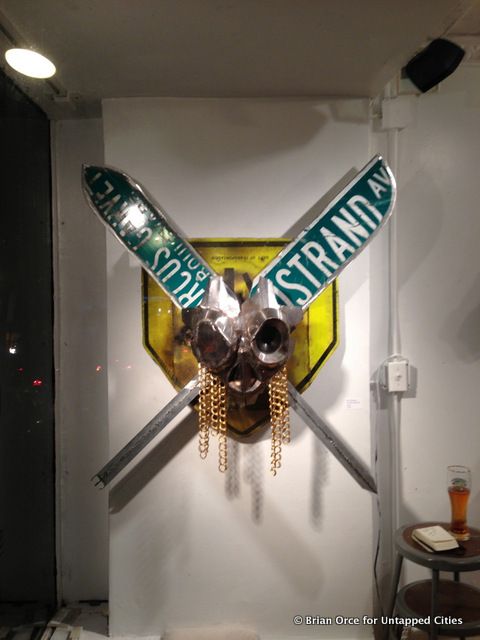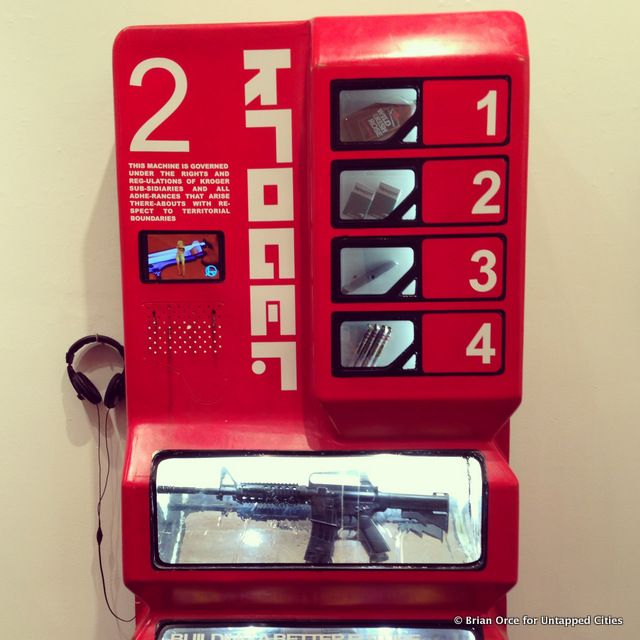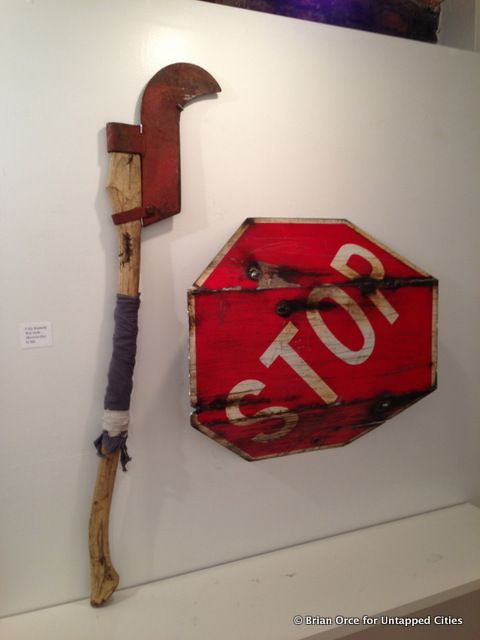Vintage 1970s Photos Show Lost Sites of NYC's Lower East Side
A quest to find his grandmother's birthplace led Richard Marc Sakols on a mission to capture his changing neighborhood on film.

In the window of the Superchief Gallery at Culturefix on the Lower East Side of Manhattan hangs a Marcus Garvey Boulevard / Nostrand Avenue coat of arms welded and cut by Coby Kennedy, one of the three Pratt-educated artists in this week’s BLACK POWER art show. Kennedy’s art comments on cultural diffusion and power dynamics through the lens of a dystopian Brooklyn 400 years in the future with only passing stylistic similarities from post-apocalyptic films like Road Warrior. He found an outlet for fascination with the ways in which cultural expectations can be manipulated as a graffiti writer in Washington, DC with the Dot-Com crew where he would carry out his missions carrying his spray cans in a briefcase instead of a backpack and wearing collared shirts and blazers instead of the graffiti writer uniform of baggy pants and hoodie.

On the wall are 5-foot long, stylized versions of old-school zip guns that bear a slight resemblance to the artillery in the Japanese animated film Princess Mononoke. The centerpieces, though, are in the back of the gallery. Two vending machines from the fictional company “KROGER” that sell machine guns, cheap screw-top liquor and cigarettes. A scantily clad woman pitches the wares on a screen playing a loop of a terrestrial analog broadcast style infomercial exhorting the consumer to buy into the promise of empowerment through violence.


The show’s titular piece is a framed piece of plexiglass with the words “BLACK POWER” screen printed black-on-black by Jorden Haley. Jorden’s process is meditative, without a conscious finished product in mind at the outset. His ornate, repeating patterns of daggers, bones and skulls printed in gold and white on various materials are done gradually, and connected later based on incremental aesthetic choices. He’s heavily influenced by the Catholic iconography of his upbringing and the animal bones his father helped him find in his back yard (his dad even mailed him the skeleton of a dead bird). He’s dressed in a leather jacket, slicked-back hair, fingerless leather gloves… and he’s white.
Ron Wimberly, whose graphic novel “Prince of Cats” (a hip-hop retelling of “Romeo and Juliet”) was recently released by Vertigo, is the unifying force in the trio of artists. He chose Jordan because his art exemplifies and is influenced by American Black Culture more than his own, which he says owes a great deal to his connection with Japanese art and culture. Behind him on the wall are three Japanese masks in blackface and a piece called “Sambojo.” He holds this fascination in common with Coby Kennedy, whose graffiti reputation preceded him before they were together at Pratt. Ron’s time in Japan crystallized his thematic focus on the push and pull of cultural expectations through the lens of mass media. He brings a depth to the popular form of comic-book art that does well to bring to light “the greater conversation in comics” and the universal, but varied images of “the other” and “the outsider” in both language and art. There’s also a good deal of classical mythology and art in his work with a noticeable nod to the style of Ver Sacrum (the official magazine of the Vienna Secession).


Superchief Gallery will be hosting an aggressive program of 52 art shows in 2013 as part of their year long residency at the Culturefix space on 9 Clinton St in Manhattan and there’s a bar downstairs. Check them out.
SHOW: BLACK POWER – April 9-April 14, 2013
FACEBOOK EVENT – https://www.facebook.com/events/499466393444505/
Opening Reception: Thursday, April 11, 2013 6-8pm
Closing Reception with the artists – Q&A: Sunday, April 14th from 5-7pm
ARTISTS: Ron Wimberly, Coby Kennedy and Jorden Haley
GALLERY: Superchief Gallery at Culturefix, 9 Clinton St., NYC 10002 (yes, they have a bar too). Find Superchief Gallery online and on Facebook.
Subscribe to our newsletter